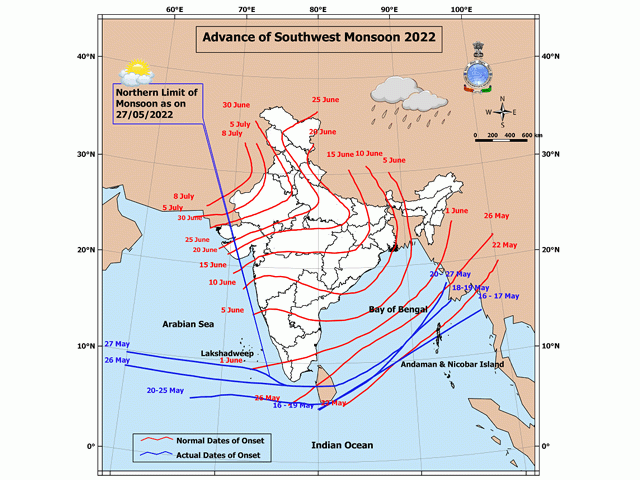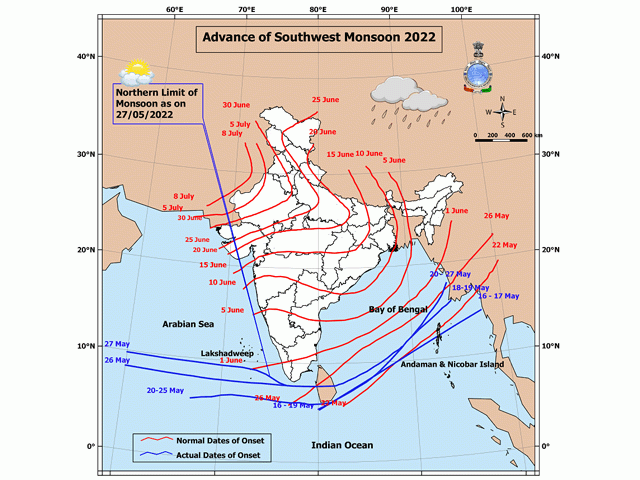Ag Weather Forum
Close Watch on India Monsoon Following Damaging Heat Wave
Any summation of international concerns in this highly unusual year 2022 which neglects India leaves the list incomplete. India, which typically consumes the majority of its crop production domestically, was in a position at the start of the calendar year to be a factor in the world commodity trade. But a monstrous heat wave during late winter and spring crimped that idea.
Published reports indicate March of 2022 was the hottest March India has recorded since record-keeping began 120 years ago in 1902. The Times of India reported the nation's capital region of Delhi recorded its second-hottest April in 72 years. NASA's Earth Observatory reported the heat wave raised temperatures across India from 8 to 15 degrees Fahrenheit above normal. The actual temperature values ranged to as high as 110 to 115 degrees Fahrenheit. A study done by the Center for Atmospheric Sciences at the Indian Institute of Technology in Delhi found that human-caused climate change impact made such an extreme heat wave 30 times more likely to happen.
P[L1] D[0x0] M[300x250] OOP[F] ADUNIT[] T[]
The heat wave badly damaged India's wheat crop. An article in Illinois Farm Policy News notes that India anticipated a wheat export total of more than 110 million metric tons (mmt) or 4 billion bushels (bb) plus. At a time when the Black Sea around Ukraine is a mine field due to the Russia invasion, this would have been a welcome addition to the world wheat supply. However, after the searing heat, India shaved its export goal by 5% to around 103 mmt (3.76 bb).
Attention now turns to the annual India summer monsoon. Monsoon rains can be very heavy and damaging; at the same time, the moisture is the lifeblood for summer crops of rice, soybean and ground nuts. These crops are mostly consumed entirely inside India. Their sizes for this year will be especially important with world commodity supplies tight and export demand already at high levels.
Monsoon rains did begin in far southern India within the long-term average time frame, favorable for crop moisture and progress. Indications from the India Meteorological Department are for the progress of the monsoon front to keep on track for average movement from south to north, eventually reaching northern crop areas by late June into early July.
However, excessive heat is still a point of stress and concern ahead of the monsoon arrival. During late May, USDA Weekly Weather and Crop Bulletin cited conditions that were so hot as to limit fieldwork activity. "Meanwhile, interior India and Pakistan continued to swelter under temperatures that exceeded the already high values typical for this time of year. Daytime temperatures approached 50 degrees C (122 degrees F) in some locales, limiting the ability to perform fieldwork or even plant irrigated crops," the bulletin noted.
Bryce Anderson can be reached at Bryce.anderson@dtn.com
Follow him on Twitter @BAndersonDTN
(c) Copyright 2022 DTN, LLC. All rights reserved.






Comments
To comment, please Log In or Join our Community .